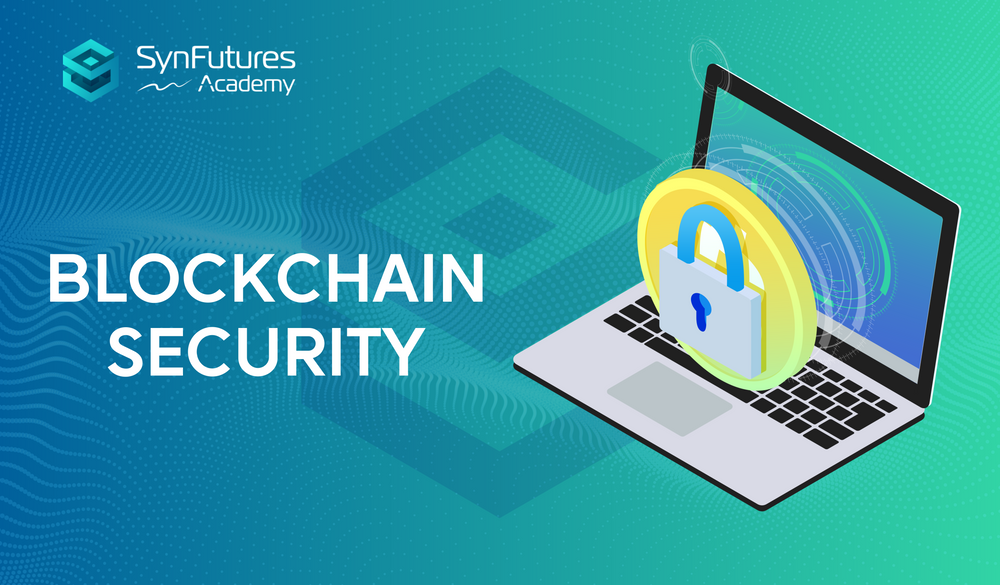What is Blockchain Security?
Key Takeaways
- Blockchain security is achieved by implementing cybersecurity techniques, developer, and user best practices on the various blockchain layers.
- Development principles such as decentralization and data encryption are used to secure the hardware, data, network, and consensus layers.
- Smart contract audits and peer reviews are among many best practices to ensure the application layer security.
Introduction
Web3 has many benefits and risks, which are important for all participants to understand. Our last article discussed the diverse types of blockchain hacks, how they work, and their severity. This article discusses ways blockchain protocols and users defend against these attacks.
Protocols' first line of defense is typically in the design philosophy of the network, data, and infrastructural layer. A common yardstick for measuring a protocol’s security is its approach to the blockchain trilemma. The Blockchain Trilemma is a widely accepted concept coined by Vitalik Buterin that a decentralized network can only provide two of three qualities regarding scalability, decentralization, and security.
The last two qualities (decentralization and security) are related and important in this article's context.
The higher the degree of decentralization, the higher the security
Decentralization measures the degree of dependency on a central system or a small number of nodes in a network. The higher the number of independent nodes, the more decentralized the network. An insufficiently decentralized network is more vulnerable to hacks such as 51 percent attacks, Sybil attacks, and Routing attacks. It is easier for a single entity or a small number of nodes to conspire against the network.
For instance, to carry out a 51 percent attack on the bitcoin network, one would have amassed a minimum of 51 percent of the total resources (in energy, hardware, and operation cost) supporting the network. The prohibitive cost of pulling such an attack makes it unfeasible, as the potential loss for the attacker defeats the purpose of the attack.
As a side note, one method of measuring a network's vulnerability is measuring a potential attack's profitability. The profitability is the difference between the value locked in a network and the cost of attacking the said network. The lesser the attack’s profitability, the less likely it is to be hacked. A handy tool for checking a blockchain's vulnerability to a 51 percent attack is Crypto51.app.
Other ways blockchain defends against hacks include
Blockchain encryption
Cryptography is a method of protecting information and communications from third parties through mathematical concepts and algorithms. Blockchains are public ledgers of a list of data (blocks) connected serially using cryptography. This connection and encryption are the most fundamental part of a blockchain. It is responsible for maintaining the integrity of the stored data on a blockchain. The two main types of encryptions used in blockchains are Asymmetric-Key Cryptography and Hash Functions.
Soulbound tokens
Soulbound tokens (SBTs) are non-transferable NFTs that enable users to have a decentralized identity tied to their wallets. The Soulbound token is a novel concept with the potential to mitigate protocols and users’ exploitations.
- Soulbound tokens protect against Sybil attacks by preventing bad actors from dominating a network.
- It provides a framework for enhanced blockchains decentralization, reducing the possibility of power asymmetry.
- It also protects users' web3 dealings with proof-of-identity and a reputation gauge system.
Audits and peer review
It is now frequent practice for developers to submit their projects to third parties for review. Audits and peer reviews help find the bugs and design oversight the developers may have missed before hackers can exploit them. This practice mitigates the risk of using blockchain protocols and ensures a better user experience.
Other application layer security measures
The last stage of web3 security is in the application layer and users' interaction with the various protocols. Much like web2, ensuring a secure experience partly depends on the user. Users must be mindful of where and to whom they submit their details.
Below are some common practices web3 users/investors employ to ensure a safe and smooth user experience when navigating the ecosystem.
- Always keep your devices and applications up to date.
- Double-check and bookmark frequent website addresses to avoid clicking on malicious links.
- Use a hardware wallet to HODL your crypto assets.
- Always use antivirus and malware protection tools.
Discover SynFutures' Crypto Derivatives products: www.synfutures.com/.
Disclaimer: SynFutures Academy does not guarantee the reliability of the site content and shall not be held liable for any errors, omissions, or inaccuracies. The opinions and views expressed in any SynFutures Academy article are solely those of the author(s) and do not reflect the opinions of SynFutures. The SynFutures Academy articles are for educational purposes or information only. SynFutures Academy has no relationship to the projects mentioned in the articles, and there is no endorsement for these projects. The information provided on the site does not constitute an endorsement of any of the products and services discussed or investment, financial, or trading advice. A qualified professional should be consulted prior to making financial decisions.




